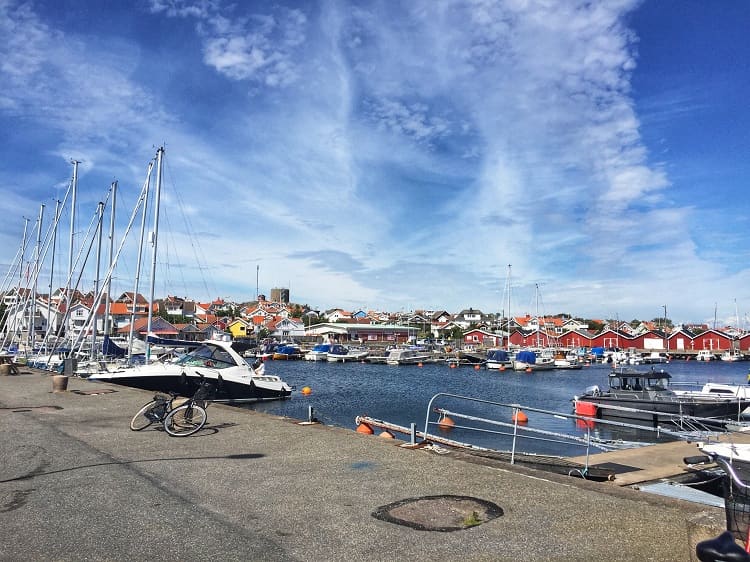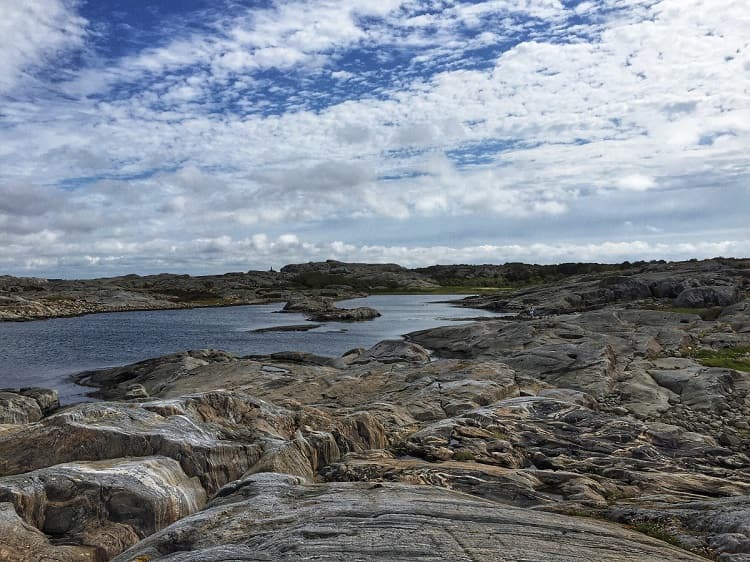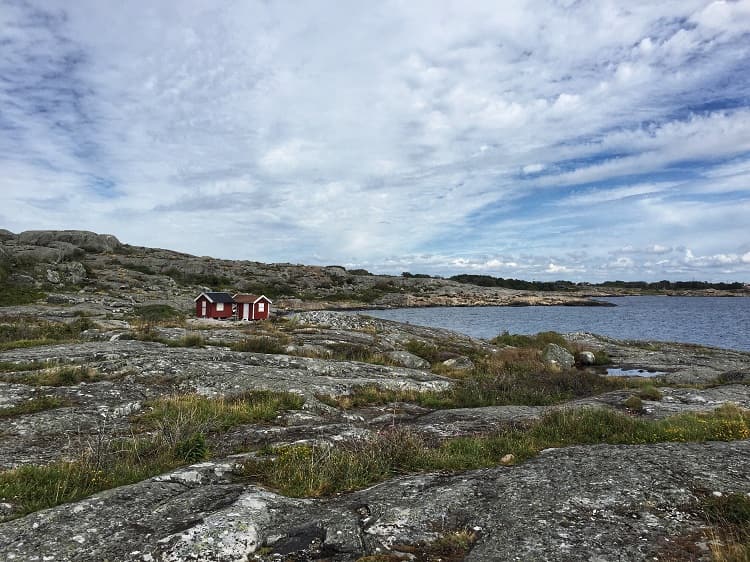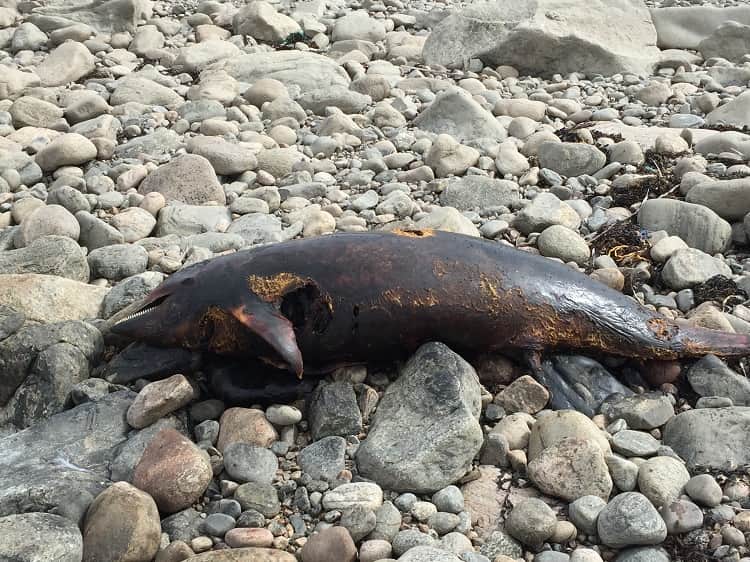
The roads are empty. Very empty. It’s a cloudy Saturday morning in Gothenburg, Sweden, and because it’s June, a month when the whole country shuts down for vacation, only a handful of cars are bypassing us on a way to coastal Hjuvik.
Bit by bit, my family and I leave the industrial powerhouse of the country (four simultaneous highway exits to different parts of the same Volvo manufacturing plant) and drive toward the sea. Suddenly, a tranquil and comforting view appears in the front.

Down the hill, thousands of red cottages and yachts line up the coast and point directly to the yellow car ferry. We have reached the gates to the Gothenburg Archipelago.
In search of A Rocky Mountain High in COLORADO
Gothenburg Archipelago Has 20 Isles
Gothenburg is situated on the mouth of river Göta älv, making it an ideal port city and a perfect trading spot. Surprisingly, on both sides of the river mouth, right beside the port cranes and gigantic ships, lies a beautiful and wild place – Gothenburg Archipelago.
Divided by Göta älv into the northern and southern part, altogether it comprises more than 20 major islands, with countless smaller ones dotted between them.

The largest islands are inhabited, but the human footprint here is very delicate and undisturbing. All the summerhouses follow traditional Swedish architecture – the majority are wooden and colored either white or deep dark red, else known as Falu red.
The main transport is boat or ferry, although some islands are now connected by bridges. Our journey starts in the largest island of the northern archipelago – Hönö.
A Kingdom of Smooth Rock
If there is one thing that is truly fascinating here, then it surely must be the rocks. All the islands of the archipelago, including Hönö, were formed by the retreating ice from one of the Ice Ages, powerful influencers of the landscapes of northern Europe.
The rocky islands, sculpted by the weight of the moving ice, became smooth and semi-sphere shaped. Time went by, and on the top of the rocks, a handful of the most robust grasses and weeds began to grow, forming a rough, harsh, yet magnificently beautiful natural environment.

Ersdalen Nature Reserve
The best place to see and admire all this is the Ersdalen Nature Reserve, situated at the northwestern part of the Hönö island. From the conveniently located car park, there is a hike of only a few minutes to the seemingly endless kingdom of gray, dark blue and green.
There are no marks, nor signs, and thus you are left to yourself and nature. Yet, no guidance is needed – the area is plain and can be easily explored by foot.

The lack of signs or any kind of civilization also allows you to re-create a spirit of discovery. The view in front of you – little hills of gray-patterned rocks and dots of moss and weeds, dense islands of shrubs and deceptively dry, yet moist marshes – are exactly the same as they were hundreds and thousands of years ago.
And nature here likes tricking: What seemed to be a straight 20-meter route (65 feet), turns into a 200 meter (656 feet) bypass, navigating between minuscule lakes, steep rocks and piles of decomposing seaweed.
Through dozens of such re-routings, we are slowly getting closer to the sea. The waters here are clear and have a very distinct, cold-looking color – something between crystalline blue and black, a truly northern shade. The sea and the islanders live their own lives here, undisturbed by civilization and not concerned about it.

We spot hundreds of birds of different species, a couple of lonely fishermen and, to our surprise, a rotting dead dolphin (or what seems to be a dolphin for my untrained eye).
The view calls out a strange mixture of amazement and disgust, as the poor animal still holds its recognizable shape, but has already changed the color into some sort of darkish purple. A nice, bright and sharp set of teeth, shining from the decaying mouth, does not help either.
A Dream Swim: Halse Långe in Hönö
With the day going by with its business, the sun decides to make an appearance and shatter away a cluster of morning clouds. This is the exact signal I have been waiting for. It’s time to take a calm, refreshing swim.
And it’s not just an ordinary swim. The structure and shape of the rocky coast make these islands one of nature’s best takes on a perfect beach. Spherical rocks smoothly descend into the clear water in one of the dozens of natural bathing and swimming spots in Halse Långe in Hönö.

The rock absorbs a large part of the heat during the day, becoming a great place to lie down and warm up before the dive (even though it’s summer, water is still cold, and it’s better to have someone on the coast with a towel ready to be thrown on).
For me, there is also another layer to this swim. The rocky coast perfectly resembles the one on my childhood’s favorite photography album – “Harmony of Stockholm skerries” by Swedish publisher and photographer Jeppe Wikström.
Bought by my parents during one of their early visits to Sweden, it is a magically poetic tale about another Swedish archipelago, the one located near Stockholm.
I remember going through those amazing photos of the archipelago and its inhabitants and admiring the smooth, yet rocky coast, which I can clearly see in front of me now. “What a great place to swim” – I remember thinking often back then.
And it truly is great. The water is cold but tolerable, the sun is shining and the waves are contacting each other, generating an endless source of splashing water. Everywhere around me, I can see the gray ridges of spherical, smooth rock.
Matjessill, a Very Swedish Lunch
After the swim, we drive to the island’s picturesque harbor in Klåvan. Here, local restaurants and chefs serve freshly prepared seafood right from the waters of the archipelago. I opt for Lilling Cottage’s ultimate classic – matjessill, traditionally pickled herring.
The dish flourishes with the simple, yet iconic nordic tastes: soft young potatoes, crispy apples, chives, aromatic dill and light crème fraîche. It is the true Swedish summer experience on one plate.
On the Hills of Hälsö
We then drive north, to the last of the islands connected with Hönö by the bridge – Hälsö. On the northern part of it, there is an unnamed, but arguably one of the best places to enjoy panoramic views of the whole archipelago. Park the car in the ferry terminal area and walk along the road back south for a few minutes.
Then turn into a sandy track on the right side of the road, leading up the hill. Follow the yellow arrows painted on the rock, and after roughly 15 minutes you will find yourself on the very top of the hill.

From here, a wonderful view appears in front of one’s eyes. The islands of Källö Knippla, Björkö, Axholmen and Burö, their tiny red houses, and quick white yachts, crossing the water from one island to another, create a magical picture of summer tranquillity.
The sun is still strong, and won’t go down for many more hours, but the light is already less direct, less sharp and less bright.
The fatigue from the long walks, refreshing swims and challenging hikes of the day lands on my shoulders and slips into my legs. Yet it’s a good feeling, a feeling of a successful summer adventure, and there is a well-deserved need to lie down on the smooth, warm rocks for the very last time. It will be terribly hard to get up and start driving back.
If You Visit the Gothenburg Archipelelo
The northern islands of the archipelago can be easily reached by a free car ferry from Lila Varholmens ferry terminal.
https://www.goteborg.com/en/archipelago/
https://www.routesnorth.com/gothenburg/gothenburg-archipelago-five-of-the-best-islands-to-visit/
Author bio: Justas Petrauskas is a freelance writer, curious photographer and passionate traveler. In his spare time, he enjoys reading Nordic novels and taking long runs in the nearby park. He lives with his family between Lund, Sweden and Kaunas, Lithuania.
